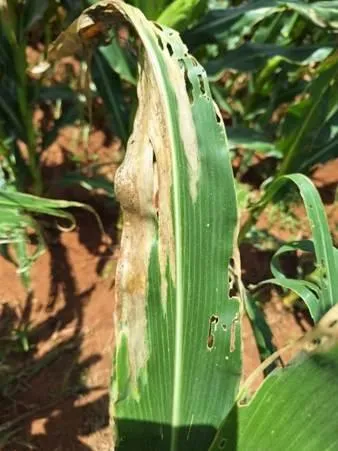
The Food and Agriculture Organization of the United Nations (FAO) Index for April 2025 released last week, which tracks monthly changes in the international prices of a set of globally traded food commodities, averaged 128.3 points in April, up 1.0 percent from March and 7.6 percent from the same month last year
Image: Supplied
The Food and Agriculture Organization of the United Nations (FAO) has reported a modest increase in its food price index, highlighting ongoing fluctuations in global commodity markets as supply and demand dynamics play a pivotal role in shaping consumer costs.
In its latest release, the FAO Index for April 2025 averaged 128.3 points, marking a 1.0% rise from March and a significant 7.6% leap from the same month last year.
Key contributors to this uptick included commodities like wheat, maize, meat, and dairy products.
The FAO’s Cereal Price Index climbed by 1.2% from March, with global wheat prices experiencing a slight boost attributed to reduced exportable supplies in the Russian Federation.
Additionally, heightened demand for aromatic rice types contributed to an increase in the FAO All Rice Price Index, signalling robust consumer interest.
Furthermore, seasonally tighter stock levels in the United States pushed international maize prices higher, exacerbated by recent adjustments to the US import tariff policies.
With exemptions for Mexico, the largest importer of US maize, and a temporary pause on tariffs above 10% for certain trading partners, market dynamics remained precarious.
The FAO Meat Price Index also saw a notable increase of 3.2% compared to March. The rise was informed by consistent international demand amid limited supply, particularly for pig meat and bovine varieties, which firmed notably in markets like Australia and Brazil.
The Dairy Price Index surged by 2.4% over the previous month, further reflecting a staggering 22.9% increase since last year. However, this was tempered by the FAO Vegetable Oil Price Index, which declined by 2.3%, although it remains 20.7% higher than its year-ago level.
Surges in palm oil outputs from Southeast Asian producers allowed for markdowns, while prices for soy and rapeseed oils climbed due to solid global demand.
Conversely, the Sugar Price Index experienced a 3.5% decrease since March, a move largely driven by increasing concerns over the uncertain global economic landscape, which could affect sugar consumption in both the beverage and food processing sectors.
Wandile Sihlobo, chief economist at the Agricultural Business Chamber of South Africa, said that the index was up 8% from the same period last year but still 20% down from its peak in March 2022, a month after Russia invaded Ukraine, leading to a surge in grains and oilseeds prices.
Sihlobo said the mild uptick in the prices of grains, dairy, and meat had underpinned the index’s mild increase in recent months.
“In the case of dairy and meat prices, there is a rise in demand, particularly in the EU area, combined with tight supplies in some places that have struggled with animal diseases. These will likely be temporary and generally mild as the supplies recover in the coming months,” he said.
Sihlobo said that in the case of grains, the price increases reflect the tighter supplies in the Black Sea region.
“But this, too, may be short-lived as the general production outlook is optimistic. For example, the International Grains Council forecasts the 2025-26 global grain production to be 2.4 billion tons, up 4% from the previous year. This forecast comprises all major global soft commodities – maize, wheat, rice, and soybeans.”
Sihlobo added that a closer look at the data shows that the 2025-26 global maize production is forecast at 1.3 billion tons, up 8% year-on-year.
“The uptick is expected to be in all major maize-producing regions worldwide. The 2025-26 global wheat crop is forecast at 805 million tons, up 1% from the previous season. The 2025-26 global rice production is estimated at 540 million tons, up 1% from the prior season,” he said.
“The 2025-26 global soybean crop is estimated at 428 million tonnes, up 3% from the previous season. This is an encouraging outlook for South Africa's consumer. South Africa generally imports around 1.8 million tons of wheat yearly, just under half of the country's annual consumption.”
BUSINESS REPORT